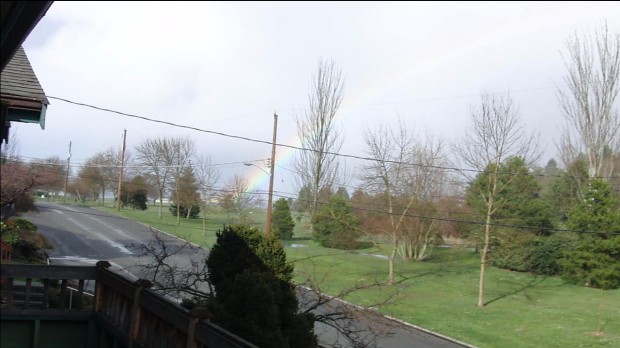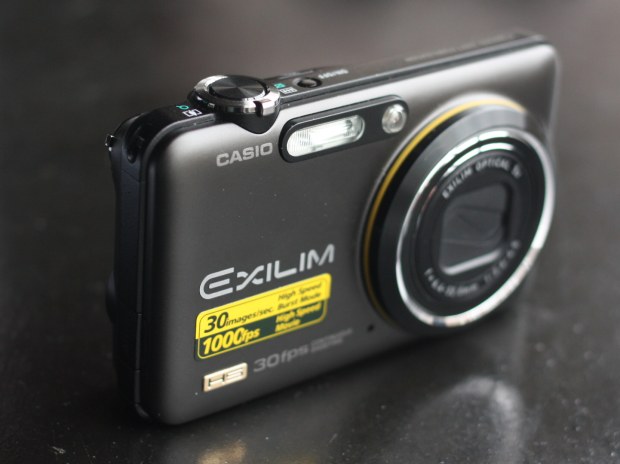
I use a DSLR and I love it, and while I appreciate what point-and-shoots do, I’ve never really wanted one. This is partly due to the superior picture-taking ability of a DSLR, but mostly it’s other cameras’ unimaginative feature lists. The latest cameras boast huge numbers of features which I would never use (smile shutter? more megapixels on a tiny sensor?), and stubbornly refuse to include any that I would.
Imagine my delight, then, upon finding a camera which not only fulfills my expectations of a point-and-shoot, but also takes steps toward being a such a useful imaging device that any photographer or cinematographer would be proud to own one. At the risk of sounding dramatic, the Casio Exilim EX-FC100 is such a camera. In fact, I would go so far as to say that the after the personal computer and the smartphone, the EX-FC100 is the most versatile piece of electronics I’ve ever used.
Now, I don’t want to imply by my fawning opening that this is a perfect camera. But it has its priorities in the right places, and it has some of the features I have been expecting (in vain) for years. If you need a demonstration of this, check out our first slow-mo reel and then the second one, which should be publishing concurrently with this review.
It’s the sensor, stupid
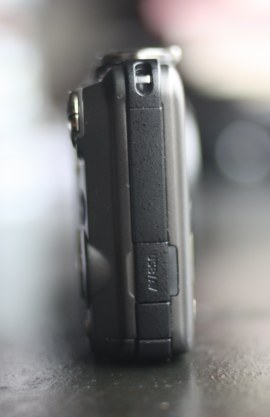 What the EX-FC100 does, in a nutshell, is use the sensor in more ways than the two that are on every camera, to wit, taking pictures at one of several sizes and making 30fps video. Few cameras offer significantly more than these functions, even if they garnish them with face detection and the like. There are no limitations on a camera’s sensor which prevent it from doing other things, are there? So why haven’t companies like Sony and Panasonic put out something that uses it more creatively? Search me. So it’s up to the old man in the business, Casio, to break the mold. The EX-F1 that came out last year was a breakthrough to be sure, but its megazoom form factor and high price made it a difficult camera to recommend. No more with the EX-FC100 and its slightly smaller brother, the FS10 (which I will now refer to collectively as “Exilims” or “Casios” since I don’t like writing model numbers). So the features aren’t new, exactly, so much as they’ve been democratized.
What the EX-FC100 does, in a nutshell, is use the sensor in more ways than the two that are on every camera, to wit, taking pictures at one of several sizes and making 30fps video. Few cameras offer significantly more than these functions, even if they garnish them with face detection and the like. There are no limitations on a camera’s sensor which prevent it from doing other things, are there? So why haven’t companies like Sony and Panasonic put out something that uses it more creatively? Search me. So it’s up to the old man in the business, Casio, to break the mold. The EX-F1 that came out last year was a breakthrough to be sure, but its megazoom form factor and high price made it a difficult camera to recommend. No more with the EX-FC100 and its slightly smaller brother, the FS10 (which I will now refer to collectively as “Exilims” or “Casios” since I don’t like writing model numbers). So the features aren’t new, exactly, so much as they’ve been democratized.
Now is a good time to note that the two cameras are mostly identical, except that the FS10 has a smaller 3x zoom instead of 5x, while being significantly slimmer and having a slightly higher max shutter speed. They both offer all the features I’m about to talk about. The pictures are of the EX-FC100.
High-speed, slow motion
By now you must know about the Exilim’s high-speed photography option. If so, skip to the end of this paragraph. If not, it’s like this: the Exilim can shoot normal 30fps 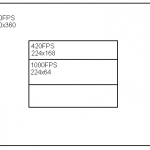 720p video, which looks perfectly decent. But you can also shoot up to 1000fps, reducing action to a tiny fraction (<4%) of its normal speed. It does this by only taking the information from a small part of the CMOS sensor — the smaller the area, the faster it can pull the information off to make a frame before starting over. So at 1000fps, you're working with a 224×64 resolution, which to be honest is almost useless. Fortunately shooting at that speed is equally useless: it renders a finger snapping into a 30-second clip that is unbelievably boring. Luckily you can also choose 420fps at 224x168or 210fps at 480×360, which are more relatable levels of slow-motion. Click on the image at right for a better idea of these sizes. And here’s a still from the normal HD mode at 1280×720.
720p video, which looks perfectly decent. But you can also shoot up to 1000fps, reducing action to a tiny fraction (<4%) of its normal speed. It does this by only taking the information from a small part of the CMOS sensor — the smaller the area, the faster it can pull the information off to make a frame before starting over. So at 1000fps, you're working with a 224×64 resolution, which to be honest is almost useless. Fortunately shooting at that speed is equally useless: it renders a finger snapping into a 30-second clip that is unbelievably boring. Luckily you can also choose 420fps at 224x168or 210fps at 480×360, which are more relatable levels of slow-motion. Click on the image at right for a better idea of these sizes. And here’s a still from the normal HD mode at 1280×720.
Now this feature is just cool. It’s fun as hell to use, and it adds a new layer to the world as you begin to think about “what would that look like at a tenth of its normal speed?” It sounds kind of corny, but the fact is that it opens up a whole new world to people like you and me — a world that was until recently only accessible through hundred thousand dollar cameras or strobe photography setups. That is worth a pat on the back all by itself. But it’s not just fun, it’s also easy. If you’re in high-speed mode, you can shoot a video just like that, and even snip it in camera so your SD card isn’t filled with 2 minutes of video covering the five seconds before the cat did that thing. Of course, you’ll need a ton of light, so most of these movies will be outside or at least in the daylight — this is a significant and technically insurmountable limitation but one worth mentioning.
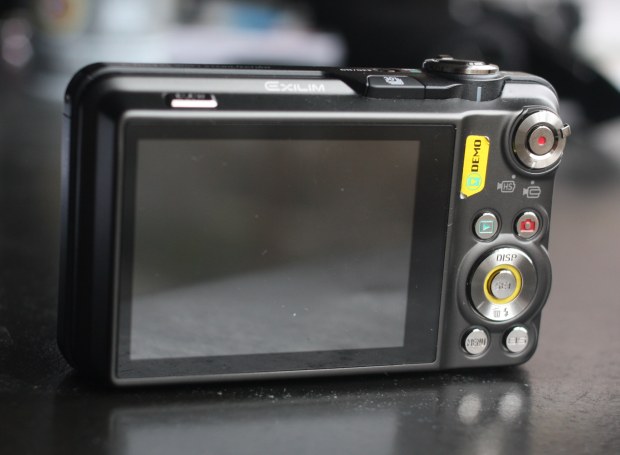
It’s also got a great mode which allows you to shoot 30fps video and then with a button press, switch to 210fps instantly, creating a kind of time-slowing effect in the video. Very cool, and very fun to use.
Wait, is this a video camera you’re reviewing
But this thing also takes pictures, right? Yes, and they’re, well, decent. I’m used to DSLR performance, so nothing is ever sharp enough for me, but the Casio took decent pictures in various lighting situations. Let’s be honest: if you’re buying a point and shoot, it’s not about image quality. Casio probably falls in the middle of the pack here, with a pretty fair amount of noise and only so-so sharpness when you look closely. Contrast and color look good, metering was fast and accurate, and focus was usually right on, though not particularly quick. I put a couple up on my Flickr here. They haven’t been adjusted in any way.
What makes the Exilim stand apart is the picture modes. Now, these aren’t your momma’s picture modes. Although there are options to do sepiatone, and “outdoor” or “action” modes, those useless things are on every camera and aren’t what I’m talking about. Using the sensor once again to create extraordinary imaging techniques, the Exilim lets you do two important things: take 30fps rapid-fire pictures and slow the action down to a crawl in order to get the best shot. When you press the “slow” button, the action on the LCD slows down to a speed of your choosing, using images it is constantly caching. You hit the shutter on the one that looks the best. I didn’t use it that much, but it’s a great option for catching your kid hitting his first ball or something.
The 30fps function is more versatile. Hit the high-speed button, and now you can hold down the shutter and it will take pictures, one every 30th of a second, for as long as you hold the shutter or until its cache is full. You can then browse through them and pick the best one, or save them all. I love this. One use I also found for it was instant panoramas. On top of Whistler mountain, I pulled the Exilim out, focused, hit the shutter and whipped the viewfinder over the landscape in front of me in an arc. The satisfying rush of clicks let me know it was working, and when I checked, lo and behold, there were about 15 pictures, ready to be stitched together — if it did that in camera too, it’d be even cooler, but unfortunately that’s not in its power. This one has been resized from enormous, of course, but you can see that it worked (I used Hugin). I actually only used every other shot for the pano.
One more thing it allows is motion-detecting trigger shots. Set up a camera to take pictures when something moves in or out of the frame, essentially. Great for catching raccoons at night, or your spouse with their hand in the cookie jar. It works, it’s easy, and its applications are only as limited as your imagination. Bird watchers would love it.
Size only kind of matters
These last two functions require that the camera take pictures in a smaller six-megapixel size instead of the full nine. Nertz, you say! What’s the point? Well, first consider that six megapixels is plenty. It’s higher-rez than any screens you’ll be seeing the picture on, and it’ll print out just fine. Next, consider this: would you rather have a six-megapixel shot of the moment your kid hits a home run (plus 20 other shots before and after), or a 15-megapixel one a second too late?
The extra imaging modes in this camera make possible the most important part of using a camera: getting the shot you want. Any damn point-and-shoot can take a good picture of a controlled situation: a group of people in a bar, a pretty landmark, a funny mess the kids made, that sort of thing. Elsewhere, they’re garbage. The Exilim allows you to get a perfect shot now where before it took a DSLR, a huge amount of luck, or both. This is extremely important and it makes me likely to recommend this camera over pretty much every other one on the market.
The other shoe
So I said at the beginning that this wouldn’t just be a love-fest for the Exilim. Well, I meant that when I wrote it, but it kind of turned out to sound like breathless fanboyism anyway, didn’t it? So what sucks about this thing?
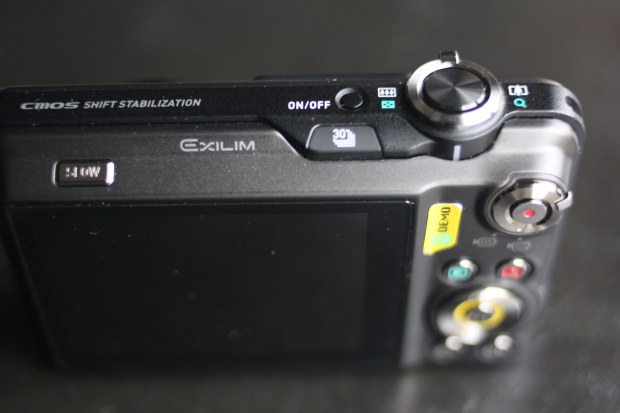
Well, it’s not the easiest to use. Its menus and things are pretty standard, but changing multiple settings is annoying because it pulls you out of the menu whenever you change anything. The display modes seem to be “no information,” “too much information,” and “waaay too much information.” Its mess of buttons is confusing at first and unlikely to be mastered by someone who isn’t geared towards this kind of thing. Although having two separate buttons for picture and video is excellent for making this camera ready to capture anything at any time, it makes for some counter-intuitive actions, like focusing with the photo button before taking a movie with the movie button (which does not focus).
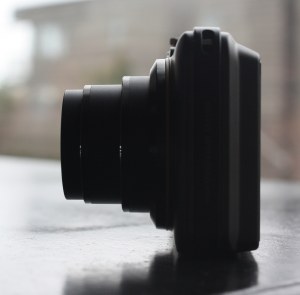 There could also be a lot more documentation. I figured most everything out after a while, but the manual and quick start guide were completely inadequate.
There could also be a lot more documentation. I figured most everything out after a while, but the manual and quick start guide were completely inadequate.
It’s not exactly small and light, either, (the slimmer FC-10 is better in this respect), and although it’s excellently constructed, the very nature of the extending lens and multitude of dials and buttons makes it feel quite breakable. It survived just fine on a trip up the mountain, however, and a little incidental snow didn’t faze it either (sorry Casio).
Image quality could be better for plain stills, but as I said before, I think it’s more important to have an okay picture of the perfect moment rather than vice versa. But yeah, for grain and sharpness it’s no threat to an equivalently-priced Nikon or Canon point-and-shoot. You’ll get a lot of noise in the dark areas if it’s had to bump the ISO a bit.
The biggest problem, actually, is the quality of the high-speed video. I’m not going to mince words here: at 1000fps it’s unwatchable. The video is not only tiny, but mercilessly compressed, leading to about as much image artifacting as image proper. My advice is to stay far away from it unless it’s really necessary. At 420fps it’s only barely acceptable; 210 is actually fine, but you really can’t be expecting HD quality out of anything but the regular HD mode. 420 and 210 should serve excellently for all your purposes, although 420 is still pretty artifact-y. I should note that it is a miracle that you can shoot in these modes in the first place, however, so don’t take this criticism too hard. It’s like someone gives you a gold bar, and you take it in and find out it’s only 14K. Darn!
I didn’t notice any in-camera reference to the green-screen mode Mr. Kashio used to general disappointment at CES. I wouldn’t have wanted to use it anyway, to be honest. I’m actually more surprised and disappointed to find that there’s no time-lapse feature. What with the other options to manipulate time in this camera, it seems natural that you should be able to set it to take one picture every second, minute, hour, or whatever. What the hell, Casio?
Basically though it’s amazing
There are definitely some features I’m missing here, but this review has already gone on way too long (*house music rising*). This is mainly because the EX-FC100 is such a good camera. I don’t want to come off sounding like a shill for Casio, but I have to be honest here. This is easily the most versatile camera on the market, and $350 is a price I’d pay myself for these capabilities. This camera carries the highest recommendation I can give (until its successor comes out), not only to regular picture takers who want a camera that does cool stuff, but also to serious photographers with DSLRs that want to have a pocket camera but don’t want to give up the ability to get that perfect shot. The EX-FC100 and FS10 are technical marvels as well as being great fun, and should be on the top of anybody’s list who is planning on buying a digital camera.
Update: Corrected the model name. Also, if you think $350 is too little to pay for it, Buy.com has it for an amazing ten thousand dollars.

